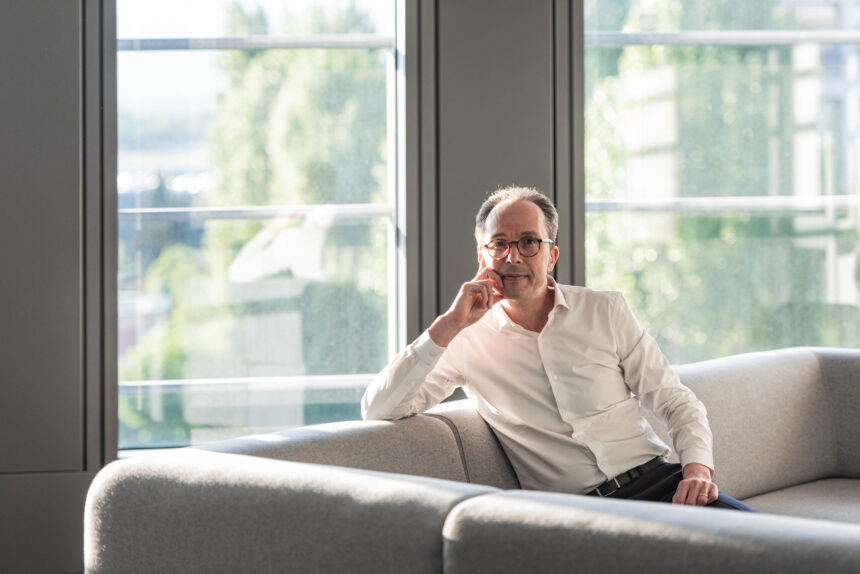As airports invest heavily in automation, biometrics, security, self-service and personalised commercial services, terminal layouts must evolve alongside these innovations.
The traditional model involving rows of check-in counters, static security areas and inefficient passenger flows no longer makes sense. Instead, airports need seamless integration, where smart technology and intelligent design work together to reduce congestion and make the most out of every square metre.
With this in mind, SITA, a global leader in air transport technology, recently announced the closure of the acquisition of Customer Communication Management (CCM), headquartered in Milan, Italy, a world-renowned expert and leader in the design, production and creation of airport interiors. This strategic move aims to redefine how airports function by seamlessly blending technology and interior design to create future-ready spaces.
CCM is synonymous with world-famous high-quality Italian design in the airport space.
It works with leading architects and designers to create efficient, functional, memorable and stylish traveller experiences.
“This isn’t just about expanding airports,” said David Lavorel, CEO at SITA.
“It’s about reimagining them. With CCM’s deep design and execution expertise, we’re transforming airports to maximise their existing footprint, optimise passenger flow and create smarter, more flexible and valuable airport terminal environments that evolve with the changing needs of the industry,” he added.
As the leader in passenger processing technology, SITA is at the forefront of managing airport space more efficiently.
The industry’s transformation demands a new approach to space management, where traditional check-in counters are replaced with innovative designs that reflect modern travel habits.
“Building efficient, tech-enabled environments is crucial for the future of travel. Airports are not just transit points. They mark a moment in a journey – no matter the destination. By integrating our expertise, we bring to life the airports of the future – architecture that is built on tech solutions and driven by efficiency to improve the overall travel experience for passengers and the operations of airport staff,” said Lavorel.
The acquisition of CCM adds valuable design and customer advisory elements to SITA’s existing technology, reinforcing its commitment to leading the future of air travel.
SITA president in Europe Sergio Colella said “the market needs a fundamental shift, where technology and design work together to make airports smarter in using their space for more capacity, and with flexibility to support the next generation of travel.
“That’s why we’re bringing CCM into the SITA family. By combining our technology and experience in airport operations with their deep understanding of design and space optimisation, we are bringing to the market a unique ‘technology by design’ capability and end-to-end integration from design to operations, all in harmony since the conception of the idea”.
For 35 years, under the management of the Marinoni family, CCM has worked on more than 300 airports worldwide, designing and delivering terminal spaces that balance efficiency, flexibility and passenger experience. Now, with SITA’s expertise in passenger processing, baggage-handling and AI-driven airport operations, this acquisition will help airport customers integrate technology and design as a single go-to solution, something that was not available up to now.
The SITA 2024 Air Transport Information Technology (IT) Insights report states that 63% of airports are prioritising self-service, biometrics and mobile apps.
In addition, IT spending has surged to US$8.9 billion as airports focus on automation, artificial intelligence and digitalisation.
However, these investments will only deliver their full impact if airports are physically designed to support them.
Technology alone will not fix congestion.
It needs smarter layouts, frictionless movement, and an infrastructure that evolves with it.
Monica Oberti has been appointed interim CEO of CCM, bringing decades of extensive expertise in reshaping and repurposing spaces at large scale globally within CCM.
She is a member of the founding Marinoni family.
“For too long, airports have had to choose between efficiency and passenger experience. Now, they don’t have to. By joining forces with SITA, we can finally bring together the best of both worlds – smart technology, intelligent design and quality production. Together, we’re not just improving airports. We’re reshaping them for the future,” said Oberti.
SITA and CCM are moving fast to integrate their expertise, ensuring that existing customers experience no disruption in service, while opening up new opportunities to optimise their airport environments.
The aviation industry is evolving at an unprecedented pace.
Airports need solutions that do not just help them catch up, but allow them to get ahead.
With around 2 500 customers, SITA’s solutions drive operational efficiencies at more than 1 000 airports, while delivering the promise of the connected aircraft to customers of over 18 000 aircraft globally.
SITA also provides technology solutions that help more than 70 governments strike the balance of secure borders and seamless travel.


